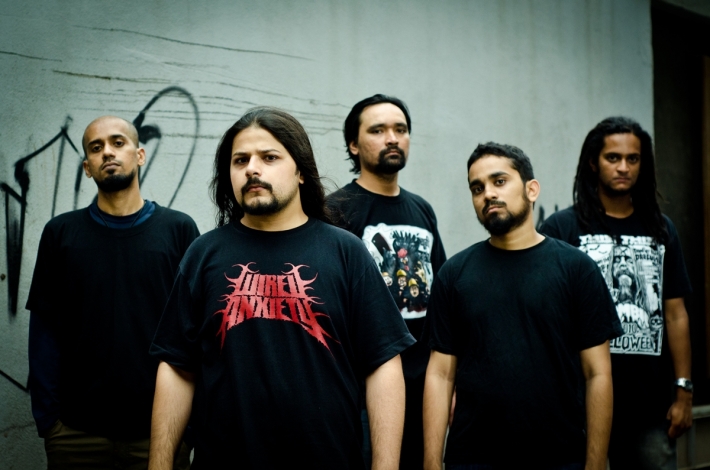

Photo by Roycin D'souza
Demonic Resurrection have released Live at Bloodstock 2012, professionally shot and edited footage of their performance at the metal festival in England last year. It came out on August 31, and has been funded entirely by fans of the band, with 90 contributions in total. The 38-minute long release comes in lieu of the music video that the band had originally planned. Frontman Sahil Makhija talks us through the process, the logistical problems he had to face, and how crowdfunding is the future.
AKHIL SOOD
Last year, sometime in April, Mumbai’s Demonic Resurrection sent out a call to arms to fans, friends, and well-wishers. It was request them to donate funds so that the band could shoot a music video. They were crowdfunding before it became the hip thing to do here. And the results are out – they’ve released professionally shot and edited footage of their performance in 2012 at Bloodstock Open Air festival, a major metal festival held annually in England. The multi-track audio has been mixed by band frontman Sahil Makhija and the video has been edited by Tushar Dhanawade. “We wanted to do a music video before we left for Bloodstock. This was before platforms like Wishberry existed so I used a self-made platform on our site,” says Sahil. They spoke to directors and got a quote of around Rs. 1 lakh. They managed to raise the entire amount in a mere 48 hours, but the logistics and the untested platform led to a lot of problems. “We ended up collecting much less. There were a lot of bogus pledges while some of the people didn’t follow through.” They decided to raise the deficit amount themselves and go ahead with the video anyway, which is when one director raised his quote to Rs. 2 lakh. Another didn’t follow through on his word.
Things weren’t looking especially rosy when they got an email from the Bloodstock organizers, who offered to provide a six-camera setup and multi-track audio for their upcoming performance for a fee. The band decided to go ahead with it, dropping plans for a music video in order to release live footage of their performance. “We sent a mail to all the fans asking them if they were OK with us using their money to buy the footage. We offered to refund their money if they weren’t.” Everyone was on board, though, and they even received a lot of support from people who aren’t necessarily fans of the band’s music, but just appreciated their legacy and the idea of crowdfunding.
They got the footage from Bloodstock in September last year, after which followed successive logistical nightmares which led to multiple delays. In his own words, the band experienced “the worst side of crowdfunding” in terms of management. However, he admits he has learnt a lot from the experience. The fans remained supportive and on board throughout, and he has a clearer idea of the process and the people he would want to work with in the future. He sent regular email updates to all the fans about the status of the project and they were very understanding about the delays. The rewards for donating funds for the video included exclusive previews, regular updates, a thank you list, guitar lessons, among other things. Fans could donate as little as Rs. 250 if they wanted, and Sahil believes that crowdfunding is all about the artist’s interpretation of the model – “If I was a hot female artist, I’d maybe sell a date with myself,” he laughs.
He remains optimistic about the principles of crowdfunding – “In my opinion, it’s probably the way forward for music. It’s becoming senseless for bands to pump money into their albums without recovering any of the costs. There’s a reason Indian bands haven’t gone out of the country: It’s a huge cost. For an Indian band to earn money is itself a big thing, and most of that money is then pumped into recording and releasing albums. How is there going to be any surplus to invest in touring?” Crowdfunding, he says, is essentially just an advance that fans are paying for an album. “It’s music at the end of the day; it’s a personal connect. It’s all part of supporting the artist you’re a fan of.”
Watch Demonic Resurrection’s entire performance at Bloodstock Open Air 2012 below:


Leave a comment